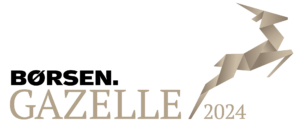In recent years, the energy trading market has been undergoing significant transformations due to technological advancements and regulatory market changes.
Especially digitalization is increasingly infiltrating various aspects of the energy trading business, and data analysis practices are becoming more automated and efficient. Energy trading software like ETRM (Energy Trading and Risk Management) systems are more commonly being used to effectively manage the emerging challenges and opportunities associated with renewable energy assets, including their intermittent nature and variability in production.
Below, we touch upon the five most important requirements an ETRM system should entail.
1 Reliability
An ETRM system relies heavily on accurate and timely data to make informed trading decisions. Any disruptions or data losses may lead to incorrect decisions, delays, and missed trading opportunities. Power traders must be able to see and access changes instantaneously, and even a 10-minute gap in communication can have operational consequences. Even the most accurate data is useless if it occurs too late in the system.
ETRM systems should also be able to run updates and changes to new compliance rules with no operational impact. Legacy systems running without support are at high risk of failure and errors. A way to ensure that no data is lost is with a redundancy setup strategy where updates are deployed continuously and granularly, meaning the system will avoid downtime during updates.
2 Flexibility
Flexibility goes hand in hand with reliability when discussing the functionalities of an ETRM system. As software evolves and compliance rules change, the power traders need to be able to access the latest features and functions. If a new file format is mandatory from the TSO, it should be implemented immediately.
So, the software should be flexible enough to handle different data sources, communication protocols, and new additions along the way. This is also applicable to system and technology integrations. Each energy market is unique in its policies, market setup, and energy-producing units. This means that the ETRM system needs to be flexible in adapting to different market conditions and trends.
3 Configurability
Like with all software, it is critical that the ETRM system has a user-friendly interface and can be configured to many different user groups and working styles. Because energy trading markets are highly dynamic and subject to constant change, working in a static or unchangeable software system is both ineffective and frustrating.
The ability to customize the system to meet internal and external requirements can lead to better decision-making and optimized operations. In the end, software developers should always consider the end user. And for power traders working in a fast-paced environment, the interface must be simple, intuitive, and meet their individual needs.
4 Integration into the ancillary service market
With the emergence of fluctuating energy sources, the demand for ancillary services has escalated as a response to maintaining grid stability. These new markets require power traders, especially the balance responsible parties, to change their ways of working so they can continue offering their customers the best options. Trading companies without interaction with the ancillary service markets risk losing business opportunities and market shares.
An ETRM solution should therefore include integration into both the energy market and capacity market and, at the same time, be able to accommodate regulatory and technological changes in the market. It is expected that there within the next couple of years will be a demand for short-term ancillary services and forecasting. Short-term ancillary services are particularly important for managing the variability of renewable energy sources, as they can respond quickly to changes in power output.
5 Compliance
None of the above-mentioned necessities are applicable if the ETRM does not comply with national and regional regulations. The rise in renewable energy sources and the goals to reduce net greenhouse gas emissions has contributed to new European market regulation schemes (MARI and PICASSO). Failure to comply with these requirements can exclude trading companies from participating in the markets, resulting in missed opportunities for increasing revenue.
Thus, being compliant is necessary to gain access to energy markets, meaning that the ETRM solution should be designed to comply with and match these market-specific requirements. ETRM systems that prioritize compliance are better equipped to manage risks and changes in the dynamic energy markets.










